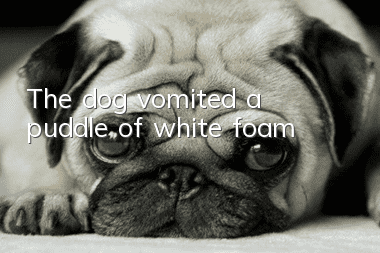Symptoms of canine distemper Can canine distemper be cured?

Symptoms of canine distemper
Most dogs will show fatigue, anorexia, elevated body temperature, and respiratory infections after being infected with canine distemper. Research has found that the first symptom of canine distemper is an increase in body temperature, which lasts for 1-3 days. Then it subsides, much like the characteristics of recovery from a cold. But the temperature rises again after a few days, and the duration is uncertain. Infected dogs may have tears, red conjunctiva, and eye secretions from liquid to mucopurulent. At the same time, the dog's nose becomes dry and nasal fluid flows out. It starts as serous nasal fluid and later turns into purulent nasal fluid. At the beginning of the illness, he would have a dry cough, which later turned into a wet cough and difficulty breathing. In the gastrointestinal form, vomiting, diarrhea, intussusception, and ultimately death from severe dehydration and weakness occur.
Symptoms of different types of canine distemper
If the dog has neurological symptoms of canine distemper, the symptoms are different because the canine distemper virus invades different parts of the central nervous system. The virus damages the brain and manifests as epilepsy, circling, abnormal standing posture, unsteady gait, ataxia, paroxysmal twitching of masticatory muscles and limbs and other neurological symptoms. The prognosis of this type of neurological canine distemper is usually poor. . Overall, canine distemper virus can cause eye damage in some dogs, clinically characterized by conjunctivitis and keratitis. Keratitis is more common around 15 days after onset. Corneal whitening can occur in severe cases such as corneal ulcers, perforations, and blindness.
The cure rate of canine distemper is extremely low
According to the current level of pet medicine, there are no direct and effective treatments and drugs. According to statistics, the cure rate of canine distemper is extremely low, and pet hospitals generally believe that the low cure rate is directly related to the time of treatment, the potency of biological drugs such as serum or antibodies used for treatment, and the pedigree and age of the dog. . That is, early-stage cases are expected to be cured, while middle- and late-stage cases are difficult to cure.
- Why do dogs eat their own children?
- What causes vomiting in puppies? Owners cannot take it lightly!
- How to train a dog? How to train dog behavior!
- What’s wrong with dogs’ loose stools?
- Precautions for novices in feeding puppies, a must-read for every dog owner!
- Dangers of shaving dogs When can I shave my dog?
- How sensitive is a dog’s sense of smell? How many times is a dog’s sense of smell that of a human?
- What is the correct way to deworm dogs externally?
- What are the symptoms of a cold in dogs and how should they be treated?
- The appearance characteristics and training methods of Afghan Hound_How much does one cost?



